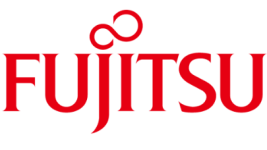According to the technology research company Technavio, the RAID Controller market will be impacted by 3 main trends in the upcoming years. Some of them are already observable such as the increasing popularity of flash-based storage on data centers. So, not a big news but this will definetly be the key trend.The universe of RAID controller cards is dominated by reputed vendors such as Avago Technologies (Broadcom), Intel, Fujitsu,Dell, and HP. Avago Technologies dominates the market since its acquisition of LSI Technologies in 2014. For the others, continuous innovation is required to take the lead since Broadcom has been constantly doing it. Earlier this year, the company introduced the first NVMe/SATA/SAS-based controllers.
Increasing popularity of SSD storage
Flash based storage offers greater speeds with lower power consumptions than traditional HDD storage devices. In 2015, the cost of flash-based storage was still greater than that of HDD-based storage arrays. But prices are going down fast as the technology is evolving incredibly quickly. Sunil Kumar Singh, a lead analyst at Technavio for research on embedded systems, says, “Due to the higher cost involved in procuring flash-based storage systems, it will experience a higher growth in large and mega data centers. However, the price of these systems will drop by 5%-10% YoY, resulting in an increased demand for flash storage during the period 2018-2020. The overall market will experience a steady growth in the adoption of flash and traditional storage systems, where flash will add more revenue in the coming years.”
Increased adoption of IoT
Researchers predict 30 billion internet-connected devices by 2019. This will result in a major boost to the global data center market and will lead to the generation of big chunks of data. Connected cars, homes, and smart cities are gaining popularity and many industries such as manufacturing, utilities, retail, automotive, and social media are using IoT for increased data transfer. By 2019, IoT-enabled devices will increase the data center traffic by a terrific 40 times. Cloud computing and data analytics play a major role in connected reality. Data centers are constantly upgraded to meet IoT data storage and processing requirements. “Many businesses are involved in establishing data centers worldwide to deal with the increasing need for the storage of IoT data. IoT will boost the establishment of distributed data centers, large data centers, and micro data centers worldwide,” adds Sunil.
Increased use of containerized data centers
Containerized data centers have already a growing popularity. These portable data center come pre-installed inside a shipping container. These pieces are part of a modular data center in which each one host power, IT, and cooling equipment. These data centers are available in the lengths of 40 feet and 20 feet and are delivered to end-users on demand. Companies like Microsoft in Virginia are building modular data centers that comprise many data center container modules in a single facility. The cost of these facilities is around USD 7 million but may vary based on requirement. With installation to deployment time being less than six months it makes the cost of deploying a containerized data center less than the cost of building or renovating a traditional data center facility. Containerized data centers are also easier to relocate and can be managed centrally.
RAID Controller manufacturers will have to integrates these consideration for the development of their futur cards in order to meet most of the market requirements and the transformation of data centers in the next years.
© HPC Today 2024 - All rights reserved.
Thank you for reading HPC Today.






























